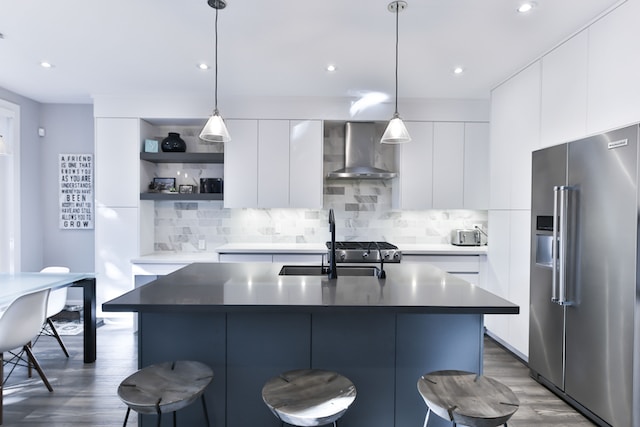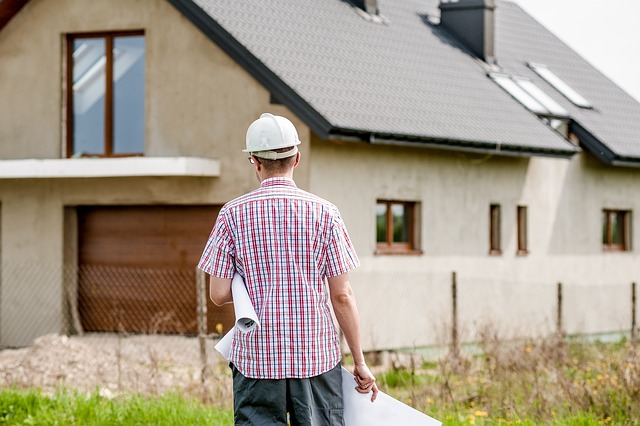Home Renovation: Where to Start
Home Renovation goals and priorities
To begin a successful home renovation project, it is crucial to identify your goals and priorities right from the start. This process involves reflecting on what you hope to achieve through the renovation and outlining the specific areas of your home that require attention. By clearly defining your goals, whether it’s to increase functionality, improve aesthetics, or enhance your home’s value, you can better communicate your vision to the design and construction team.
Prioritizing goals is essential to ensure that the renovation aligns with your overall objectives and stays within budget constraints. It may involve making tough decisions about which aspects of the project are non-negotiable and which can be compromised. By establishing clear priorities, you can streamline the decision-making process and focus resources on the areas that will have the most significant impact on your home’s transformation.
Assessing your budget and financing options
Once you have clearly identified your renovation goals and priorities, the next crucial step in the process is assessing your budget and exploring various financing options. It’s essential to have a realistic understanding of how much you are willing and able to spend on your renovation project. Take into account factors such as the scope of work, materials, labor costs, and any additional expenses that may arise during the process. By setting a clear budget from the outset, you can mitigate the risk of overspending and ensure that your project stays on track financially.
When it comes to financing your renovation, there are several options to consider. You may choose to use personal savings, take out a home equity loan or line of credit, or explore alternative financing sources such as personal loans or construction loans. Each option comes with its own set of advantages and considerations, so it’s essential to carefully weigh the pros and cons of each before making a decision. By making informed choices about your budget and financing options, you can set a solid foundation for a successful and stress-free renovation project.


Researching and selecting a reputable contractor
When it comes to renovating your home, one of the most crucial decisions you will make is selecting a reputable contractor to carry out the project. A reliable contractor can make all the difference in ensuring that your renovation is completed smoothly and to your satisfaction. To begin the process of finding the right contractor for your project, start by asking for recommendations from friends, family, or colleagues who have recently undertaken similar home renovations. Personal referrals can often provide valuable insights into the contractor’s work ethic, quality of work, and overall professionalism. Additionally, consider browsing online reviews and ratings on trusted platforms to gather further feedback on potential contractors.
Once you have a shortlist of contractors, take the time to conduct thorough research on each candidate. Request to see examples of their past projects, ensuring that their style and quality align with your vision for your renovation. Ask for references and follow up with past clients to inquire about their experience working with the contractor. It is also essential to verify that the contractor is properly licensed, insured, and bonded to protect both you and your home throughout the renovation process. By investing time in researching and selecting a reputable contractor, you can set a solid foundation for a successful home renovation project.
Obtaining necessary permits and approvals
It is crucial to acquire the essential permits and approvals before commencing any renovation project. Failure to obtain the necessary documentation can lead to legal issues and delays in the construction process. Each local municipality has specific requirements and regulations regarding renovations, so it is imperative to research and adhere to these guidelines diligently.
When applying for permits, ensure that you have all the required documentation and plans ready for submission. This may include architectural drawings, engineering reports, and a detailed project proposal. Working closely with your contractor can streamline the permit application process and help navigate any potential challenges that may arise. Remember that securing the proper permits not only ensures compliance with building codes but also guarantees the safety and structural integrity of your renovation project.
Creating a detailed project timeline
When creating a detailed project timeline for your home renovation, it is essential to start by breaking down the entire project into smaller, more manageable tasks. Each task should be assigned a specific timeline, taking into consideration the dependencies between different activities. This will help you accurately estimate the overall duration of the project and ensure that it stays on track.
Additionally, it is crucial to factor in potential delays and setbacks when creating your project timeline. By building in buffer time for unexpected issues that may arise, you can minimize the impact of these challenges on the overall schedule. Regularly reviewing and updating the timeline as the project progresses will also help you stay organized and adjust as needed to keep everything running smoothly.


Making design decisions for each room or area
When making design decisions for each room or area in your renovation project, it is crucial to consider the overall aesthetic you wish to achieve. Take into account the style of the existing space and how you want it to evolve through your design choices. Pay attention to details such as color schemes, furniture layout, and lighting options to create a cohesive and visually appealing environment. Remember that each room serves a specific purpose, so tailor your design decisions to enhance functionality while maintaining a sense of harmony throughout your home.
Furthermore, when selecting materials and finishes for each room, prioritize quality and durability to ensure longevity and ease of maintenance. Consider aspects such as flooring, cabinetry, countertops, and fixtures to reflect both your personal style and the practical needs of the space. Opt for timeless elements that can stand the test of time while also incorporating trendy accents to infuse personality into your design scheme. By carefully curating materials and finishes for each room or area, you can elevate the overall look and feel of your home renovation project.
Selecting materials and finishes
When selecting materials and finishes for your renovation project, it is crucial to consider both the aesthetic appeal and functionality of each option. Start by researching different materials that align with your design vision and budget constraints. Whether you opt for hardwood floors, ceramic tiles, or laminate countertops, ensure that the chosen materials complement each other and tie together the overall look of your space seamlessly.
Additionally, pay close attention to the durability and maintenance requirements of each material. For high-traffic areas like kitchens and bathrooms, prioritize materials that are easy to clean and resistant to wear and tear. Consulting with design experts or visiting showrooms can provide you with valuable insights and help you make informed decisions that enhance the longevity and visual appeal of your renovation project.
Developing a contingency plan for unforeseen issues
In any renovation project, it is essential to anticipate and prepare for any unexpected challenges that may arise. Developing a detailed contingency plan for unforeseen issues will help you navigate through surprises or setbacks smoothly. One key aspect of creating a contingency plan is to set aside a reserve fund specifically allocated for unexpected expenses. By having this financial cushion in place, you can address any unanticipated costs without derailing the entire project.
Additionally, it is prudent to assess the potential risks that could impact your renovation project and brainstorm possible solutions in advance. This proactive approach will enable you to swiftly address issues as they arise, minimizing the impact on your timeline and budget. Engaging with your contractor to discuss potential contingencies and outlining clear communication channels will also ensure that everyone involved in the project is prepared to handle unforeseen issues efficiently.
Setting up a temporary living arrangement, if necessary
It is not uncommon for homeowners to need to arrange for temporary living accommodations during a major renovation project. This is especially true for projects that involve extensive work or renovations to key areas of the home, such as the kitchen or bathrooms. In such cases, it is important to plan ahead and make arrangements for temporary housing that suits your needs and preferences.
When setting up temporary living arrangements, consider factors such as proximity to the construction site, amenities available, and duration of stay. Options may include staying with friends or family, renting a short-term apartment or house, or booking a hotel room. Ensure that the temporary space is equipped with the essentials to maintain a comfortable living environment during the renovation period. By planning accordingly and securing suitable temporary accommodations, you can minimize disruptions to your daily routine and facilitate a smoother renovation process.
Preparing your home for construction
To prepare your home for the upcoming construction phase, decluttering and clearing out the work areas are vital initial steps. Removing furniture, personal belongings, and any items that may obstruct or hinder the renovation process will pave the way for a smooth and efficient construction timeline. Emptying the spaces earmarked for renovation will not only prevent damage to your possessions but also enable the contractors to work unimpeded.
Next, protective measures should be implemented to safeguard the rest of your home from dust, debris, and potential damage during the construction. Installing temporary barriers and protective coverings over floors, walls, and fixtures in adjacent areas will help maintain cleanliness and prevent unnecessary wear and tear. Prioritizing these preparatory steps will set the stage for a well-organized and successful renovation project, ensuring that your home is ready for the construction work ahead.
Monitoring progress and addressing any concerns promptly
When undergoing a renovation project, it is crucial to consistently monitor progress and swiftly address any concerns that may arise. Regularly checking in on the construction process allows you to ensure that the work is being done according to the established timeline and quality standards. By promptly addressing any issues that come up, you can prevent small problems from escalating into larger, more costly problems down the line.
Effective communication with your contractor is key to monitoring progress and addressing concerns promptly. Keep an open line of communication to discuss any deviations from the original plan, unexpected challenges, or changes in the project scope. If you notice something that doesn’t align with your expectations or specifications, bring it up with the contractor immediately to find a resolution. Proactive communication and swift problem-solving will help keep your renovation on track and ensure that the final outcome meets your vision and requirements.
Completing final inspections and walkthroughs
As the renovation project reaches its final stages, it is crucial to schedule comprehensive inspections and walkthroughs to ensure that every aspect of the work meets the established standards and requirements. Experienced professionals must meticulously assess the completed renovations, checking for any deviations from the initial plans, potential safety hazards, or the need for additional finishing touches. These final checks serve as a quality control measure to guarantee that the renovated spaces align with your vision and expectations.
During the walkthroughs, both you and the contractor need to be present to address any last-minute concerns or questions that may arise. It is essential to thoroughly inspect every room, paying close attention to details such as paint quality, fixture installations, and overall functionality. Any discrepancies or issues identified during the walkthroughs should be documented and promptly communicated to the contractor for resolution. By conducting thorough inspections and walkthroughs, you can ensure that the renovation project is completed to your satisfaction before officially concluding the process.
Enjoying your newly renovated home
Upon completion of your home renovation project, the time has finally arrived to bask in the joy of your newly transformed living space. The intricate details and carefully considered design choices have come together to create a personalized haven that reflects your unique style and preferences. As you step into each room, take a moment to appreciate the craftsmanship and attention to detail that went into bringing your vision to life.
Furthermore, now is the perfect opportunity to host gatherings and events to showcase your revamped home to family and friends. Whether it is an intimate dinner party or a lively celebration, your newly renovated space provides the ideal backdrop for creating lasting memories and fostering meaningful connections. Embrace the opportunity to revel in the comfort and beauty of your home, knowing that it has been thoughtfully redesigned to enhance your quality of life and elevate your everyday experiences.